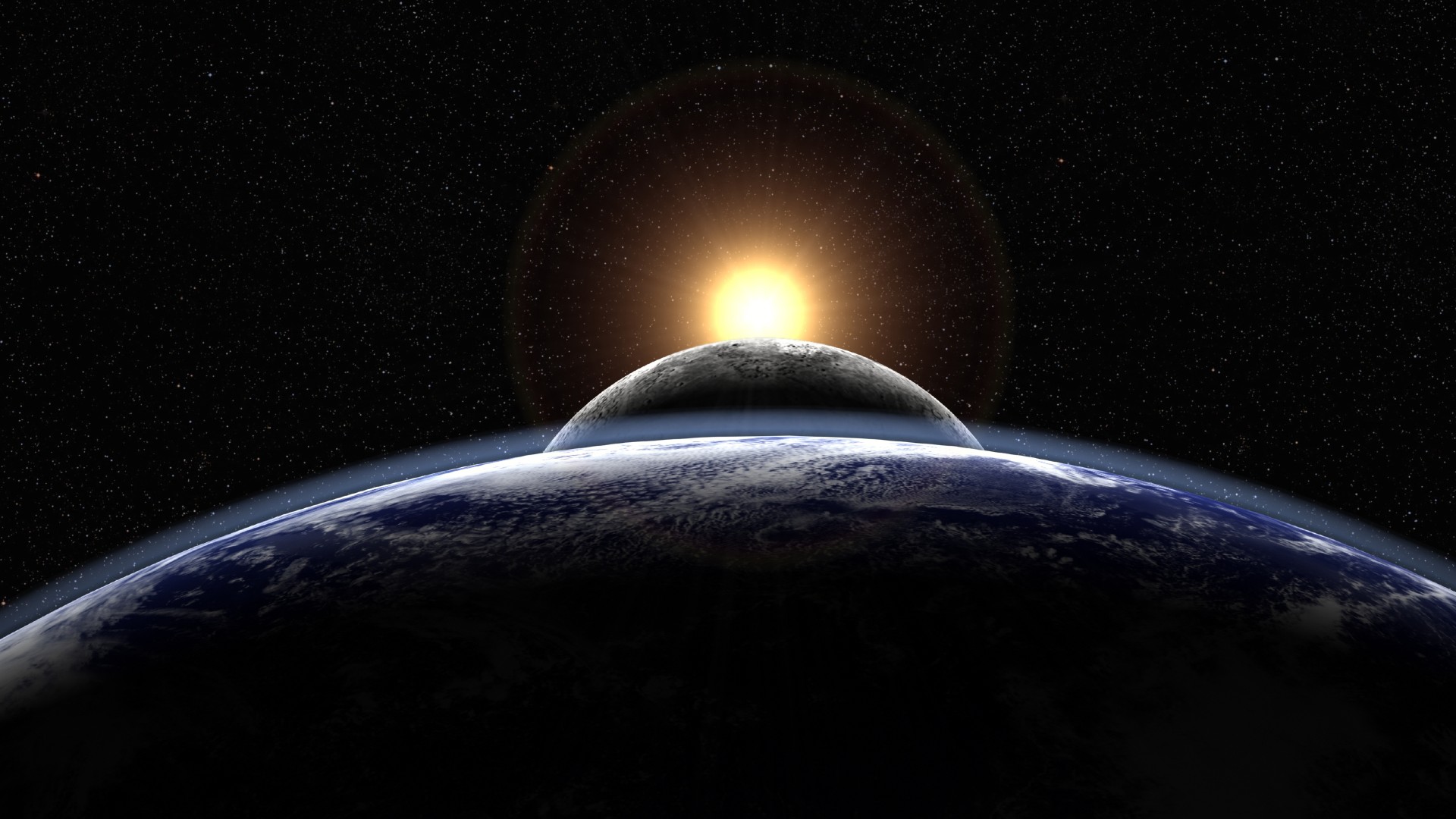For a billion years, Earth may have had 19-hour days. Here's why.
Days were once five hours shorter than they are now due to the moon's proximity to Earth, a new study suggests.

In the prehistoric past, Earth may have been stuck with 19-hour days for a billion years — and the moon was to blame, a new study suggests.
According to the research, published Monday (June 12) in the journal Nature Geoscience, between about 2 billion and 1 billion years ago, a full day lasted five hours less than it does now because of how close the moon lingered near Earth.
Since then, Earth's days have steadily become longer as the moon has distanced itself from our planet, slowing Earth's rotation, according to Live Science's sister site Space.com.
"Over time, the moon has stolen Earth's rotational energy to boost it into a higher orbit farther from Earth," study lead author Ross Mitchell, a geophysicist at the Institute of Geology and Geophysics of the Chinese Academy of Sciences, said in a statement.
However, in the mid-Proterozoic era, the moon consistently hovered at a set distance from Earth, stalling the day length at around 19 hours for 1 billion years before it eventually started getting longer again, the study found. Scientists call this time period the "boring billion" because of the relative stability of Earth's tectonic activity, steady climate and slower biological evolution.
Related: What would happen if the moon were twice as close to Earth?
For their study, the researchers tapped into a relatively new geological method to measure historical day length. Known as cyclostratigraphy, the technique focuses on the variation in sedimentary deposits of rocks. Cyclostratigraphy helps researchers identify "Milankovitch cycles" — changes in Earth's orbit and rotation that have affected the planet's climate.
Sign up for the Live Science daily newsletter now
Get the world’s most fascinating discoveries delivered straight to your inbox.
Analyzing a wealth of cyclostratigraphy records on Milankovitch cycles allowed the researchers to peer into the past and determine why the moon clung so tightly to Earth during this time period. They found that the answer is likely related to the tides that affect the planet's rotation.
Gravitational pull from the moon controls Earth's ocean tides, thus slowing the planet's rotation. However, the sun also exerts a gravitational pull in the form of "solar atmospheric tides" that occur when sunlight heats Earth's surface and speeds up the planet's rotation. Currently, lunar tides are about twice the strength of solar atmospheric tides, meaning they have more influence on how quickly Earth spins. But during the "boring billion," Earth was rotating faster, indicating that the gravitational pull of the moon was weaker than it is now, according to the study. And so, during that time, solar and lunar tides were more evenly matched.
"Because of this, if in the past these two opposite forces were to have become equal to each other, such a tidal resonance would have caused Earth's day length to stop changing and to have remained constant for some time," study co-author Uwe Kirscher, a research fellow at Curtin University in Australia, said in the statement.
This prolonged period of 19-hour days coincides with a similar slowdown in the rise of oxygen in the atmosphere during the mid-Proterozoic era, the study found — which may have contributed to the slowdown in evolution of life on Earth during that time.

Kiley Price is a former Live Science staff writer based in New York City. Her work has appeared in National Geographic, Slate, Mongabay and more. She holds a bachelor's degree from Wake Forest University, where she studied biology and journalism, and has a master's degree from New York University's Science, Health and Environmental Reporting Program.









